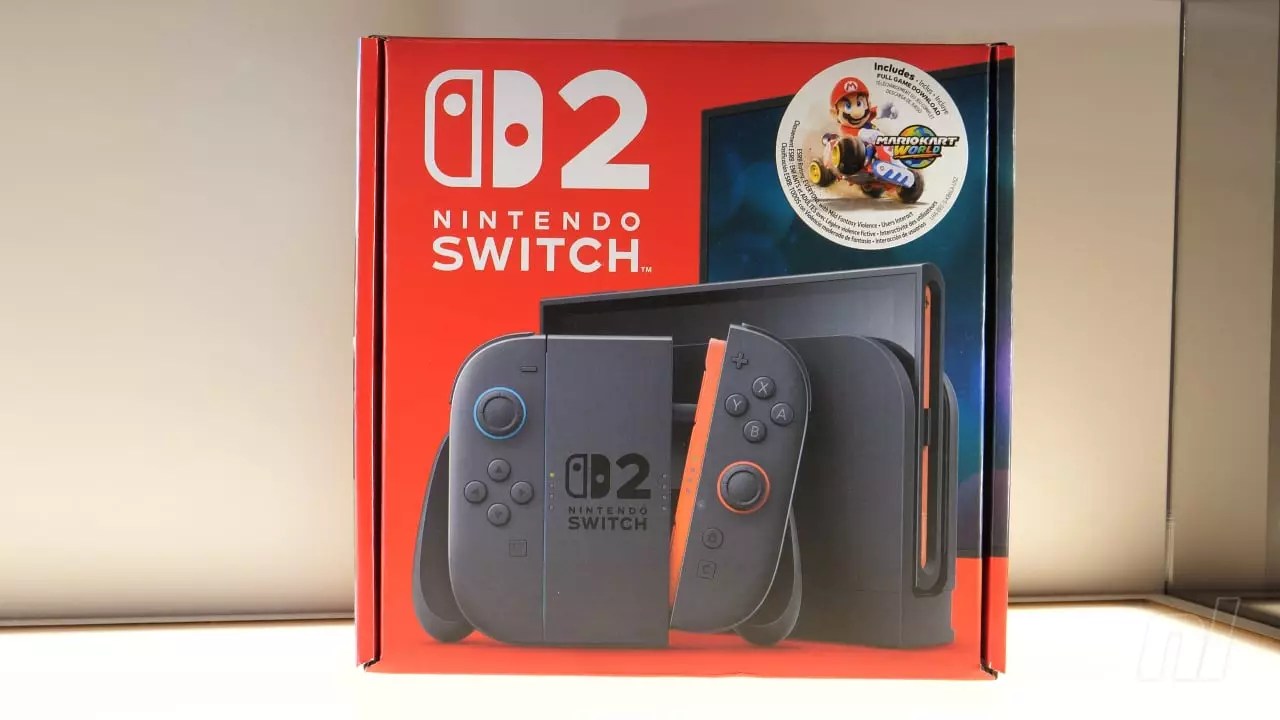In an era where consumers are increasingly sensitive to price fluctuations, Nintendo has made a significant move by confirming the prices of its highly anticipated Switch 2 console will remain unchanged from their initial announcements. The base unit is set at $449.99, while the Mario Kart World bundle will retail at $499.99. These prices were initially unveiled during the Switch 2 Direct on April 2, 2025. Notably, other major titles like Mario Kart World and Donkey Kong Bananza will also maintain their prices, encouraging pre-orders that are expected to open on April 24, 2025, across various regions.
This decision seems to respond to fans who might be feeling the recent economic strain typical in the gaming industry. With rampant inflation and an unpredictable market, Nintendo’s choice to keep these primary prices steady could be seen as either a strategic masterstroke or a gamble on consumer loyalty. Reassurance comes not just to prospective buyers, but also to retailers who count on stable pricing to attract customers in an increasingly competitive marketplace.
Market Dynamics: A Response to Tariffs and Conditions
Nintendo’s announcement included a significant caveat regarding accessory pricing, which will witness a $5 to $10 hike for various items, from controllers to carrying cases. The reasoning behind this adjustment stems from “changes in market conditions,” hinting at the impact of global supply chains and economic environments that have seen companies across industries grapple with tariffs and logistical nightmares.
Indeed, the scope of the tariff impact cannot be understated. Nintendo pre-orders in the U.S. and Canada were delayed, allowing the company to strategize how they navigate the challenges posed by international relations affecting goods traded across borders. The potential for future price adjustments based on market conditions adds another layer of complexity to this situation. Gamers are left speculating whether this is a temporary fix or a longer-term adaptation to a harsher economic reality.
The Psychology of Pricing: Gamer Patricia and Expectations
It is fascinating to consider how the price of gaming consoles interacts with consumer psychology. For many gamers, a console represents not just an entertainment device but a symbol of personal and social experience. Nintendo’s decision not to increase the base price could be interpreted as an effort to sustain community trust, particularly as some fans were bracing for larger price increases due to external economic pressures.
However, with the reality of accessory price hikes, some fans might feel a slight sting, as those added costs accumulate, potentially leading to a more significant overall expenditure. Whether this new pricing framework works in Nintendo’s favor depends on how consumers prioritize their spending. Will they continue to flock to Nintendo for the brand’s nostalgia and innovation, or will the additional costs for necessary accessories deter them?
Looking Toward the Future: Will Nintendo Adapt?
While Nintendo has garnered positive attention for maintaining stable prices on core hardware and flagship titles, the looming question is whether they will stay agile in an ever-changing market landscape. As we move closer to the launch date, one must consider the future—will Nintendo revise accessory prices again if conditions improve? The adjustment of prices based on market dynamics hints that Nintendo is keeping a close eye on the economy, signaling a readiness to pivot should the situation demand it.
Moreover, this pricing strategy may reflect broader trends in how companies might conduct business moving forward. Sustainability often emerges as a theme, whether it be in pricing models, production processes, or corporate responsibility. As consumers become more socially and economically aware, how companies respond to those demands, particularly in dynamic sectors like gaming, will be crucial.
Indeed, for now, the stability in core pricing from Nintendo provides a glimmer of hope for gamers eager to embrace the next generation of interactive entertainment. The effectiveness of this strategy, paired with those auxiliary price adjustments, may define the trajectory of Nintendo in a market where consumer trust and satisfaction are just as vital as the games they offer.


Leave a Reply